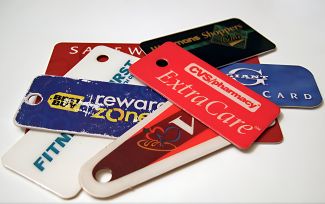
Drawing in customers is the key for any small retail business. Doing this often costs money, which will drain your marketing budget. In our marketplace, two different methods are popular.
Discount vouchers and loyalty programs.
Now, let us quickly review how these work.
Broadly, a discount voucher, often after the purchase but not always, offers a discount on their next visit. A loyalty program provides your customer with some points that, over time, can be redeemed on a future purchase.
Let's contrast these two different types of promotions.
Discounts: A Direct Way to Boost Sales
Marking down prices piques buyer interest quickly. It is a no-fuss tactic to move stock. Benefits of discounts include:
-
Universal Appeal: Price cuts attract deal-seekers and even casual shoppers.
-
Great with one-off customers: Many people, like in shopping centres, have heaps of customers they will never see again. If they do not make a pitch for them now, they will never sell to them again.
The main problems?
> You gain only discount-driven customers who buy on price.
> No data
> Easy to run
> No long-term relationship is made with the client. They are in it for the discount and will only remain if it continues.
> Discount vouchers are expensive. I once determined that a discount voucher system costs the retailer over three times as much as a points-based system. See here. There are good reasons why major retailers in Australia run point systems.
Loyalty Points: Investing in Repeat Customers
While discounts provide instant sales, loyalty programs focused on points accrual emphasize long-term retention. For small retailers, benefits include:
-
Builds Customer Loyalty: Earning points for purchases incentivizes choosing your store.
-
Valuable Data on Buying Habits: Informs decisions around stock and promotions.
-
More flexibility: Allow better redemption on high-margin items.
-
Tiered Rewards System: Personalize program levels and benefits based on spending.
-
Australians like points: We are big users of VIP points
The main risk?
> The main obstacle is the amount of work and maintenance required over time to keep the program running.
> Although the cost is less, it is still there. As a rule, a loyalty program is only sustainable in retail at 1% of turnover without the supplier's help. So for example, say your shop does $500,000 a year turnover. The maximum a loyalty program should cost you is 1% or $5,000 by the book, which is based on a 30% margin.
Something to chew on
Call to action
Let us know if you want to learn more about the loyalty program options available in our POS software. If there's enough interest, I'll write a follow-up article comparing the systems.


